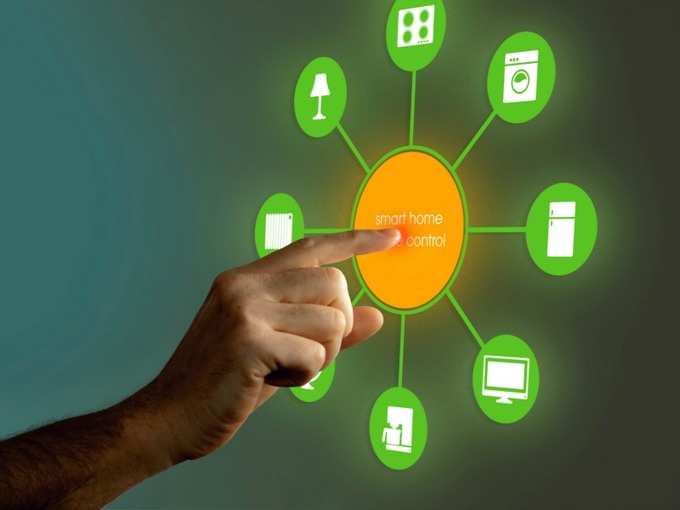 The phenomenon called the
The phenomenon called the The main premise of the IoT revolution rests on automation – where consumer data is transmitted seamlessly over a connected network of systems, without the need for any human intervention. Retailers who have integrated IoT into their customer experience strategy are already beginning to reap tangible benefits that go beyond brand loyalty and an enhanced bottom line.
IoT is redefining consumer shopping trends
IoT enabled technologies such as beacons and Wi-Fi tracking have largely benefited retailers who can now strike a perfect balance between brick-and-mortar and online stores when it comes to providing superior customer experiences. IoT – in its basic form – has impacted the average consumer in a big way too. Just imagine a grocery store that instantly sends its customers select food recipes based on the items in their shopping carts; or a smart button in the home laundry room that automatically orders a fresh jar of detergent from an online store with a home delivery option. How about a smartphone app that lets consumers control the various electrical appliances in their homes – the possibilities are endless.
Consumers are becoming smarter by the day and relying heavily on IoT technology such as in-store product barcode scanning to acquire relevant information on product availability, discounts, promotions, etc. Then there’s virtual reality. Store sensors that can read smart devices and wearables are playing a big role in helping store associates offer enhanced customer service. Wearables are fast becoming the rage among a growing urban population and revolutionary technologies such as Google Glass, wearable fitness trackers, and self-health monitoring devices connected to the internet have completely changed the way people go about their daily lives.
Retail readiness in IoT adoption
Integrating futuristic technology with e-commerce is the next big thing in retail that will see a marked rise in digital consumerism by providing superior and consistent shopping experiences. Besides the convenience factor, IoT facilitates customised and personalised shopping experiences by enabling stores with the necessary intelligence. The retail industry has willingly embraced IoT and is one of the strongest adopters of this intelligent technology as is evident from the following factors.
Merchandise tracking using Radio Frequency Identification (RFID): The success of any retail business largely depends on the agility of its supply chain. The use of RFID in reporting real-time data ensures increased visibility into available stock, thereby facilitating instantaneous stock replenishment for better customer experiences across physical and online stores. The success of IoT depends on compliance to standards such as Electronic Product Code (EPC) deployed along with passive Ultra High Frequency (UHF) RFID tags to track store inventory. RFID tags enable retailers to track the status of inventory, customer purchase data, product preferences, and general shopper behavior.
Online-offline integration: One of the key drivers for retail in the wake of an IoT revolution is the capability to integrate online (internet and digital) and offline (in-store) retail. With connected devices facilitating increased data sharing, both retailers and consumers are enabled with necessary information to support a seamless shopping experience. By providing both parties with adequate data, IoT has bridged the gap between order fulfilment and delivery, channel and platform notwithstanding.
Process automation: IoT is all about automation and by automating existing processes and systems, retailers are going all out to provide consumers with real-time shopping experiences – 3-D apparel fitting stations to DIY apps to smoother checkout and payment options through mobile wallets. Continuous customer demands for ‘live’ shopping experiences and speedy order fulfilment are met with more personalised interactions at every touch point – thanks to limited human intervention facilitated by automation.
Market prediction points to RFID being a key enabler of the IoT disruption; however, there are other technologies within the IoT ecosystem such as infra-red sensors, digital signage, smart shelves, and more that contribute to a connected environment, offering smarter options to consumers to shop better.
It is estimated that by the year 2020, 50 billion devices will be connected on the IoT network . While online shopping has become a rage today, nothing can measure up to the pleasure of the look and feel factor offered by physical stores. With technology, brick-and-mortar stores are redefining themselves to match the elusive online store and are providing consumers with consistent shopping experiences.
Connected systems backed by cloud-enabled data storage and real-time movement of information across the enterprise has disrupted the retail industry and led to a major shift in consumer expectations by empowering the average shopper with the requisite intelligence to make smarter shopping decisions.
IoT has rewritten the rules of the game – shopping today is no longer about long queues and cumbersome checkout procedures. We are looking at an intelligence that can study consumer shopping patterns to improve customer service, ensure speedy delivery of products, and help retailers gain a competitive edge by augmenting customer loyalty.
(The article is authored by Srinibas Behra, Founder and CEO,Retigence Technologies)
(Image: Thinkstock)